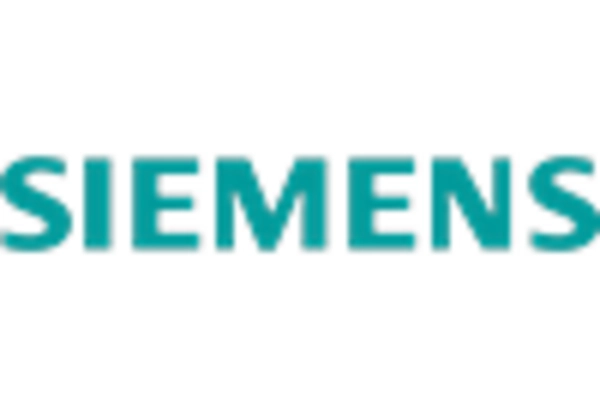Rising Demand for Smart Infrastructure
The electrical computer-aided-design market is experiencing a notable surge in demand driven by the increasing focus on smart infrastructure development across the GCC region. Governments are investing heavily in modernizing urban environments. This investment necessitates advanced design tools for efficient planning and execution. For instance, the UAE's Vision 2021 aims to enhance the quality of life through smart city initiatives, thereby creating a substantial market for electrical CAD solutions. This trend is expected to propel the market growth, as stakeholders seek innovative design methodologies to integrate smart technologies into infrastructure projects.
Growing Emphasis on Regulatory Compliance
Regulatory compliance is becoming increasingly critical in the electrical computer-aided-design market, particularly as governments in the GCC enforce stricter standards for safety and environmental impact. Designers and engineers are required to utilize advanced CAD tools that ensure adherence to these regulations. This trend is likely to drive the adoption of electrical CAD solutions, as companies seek to mitigate risks associated with non-compliance. The market is expected to see a rise in demand for software that incorporates regulatory guidelines, thereby enhancing the overall design process.
Technological Advancements in Design Software
Technological advancements are significantly influencing the electrical computer-aided-design market, as software developers continuously enhance their offerings to meet the evolving needs of engineers and designers. The introduction of features such as 3D modeling, simulation capabilities, and real-time collaboration tools is transforming the design process. In 2025, the market is projected to reach approximately $2 billion in the GCC, reflecting a compound annual growth rate (CAGR) of around 8%. These advancements not only improve efficiency but also reduce errors, making them essential for modern engineering projects.
Expansion of Educational and Training Programs
The expansion of educational and training programs focused on electrical engineering and design is positively impacting the electrical computer-aided-design market. As universities and technical institutions in the GCC enhance their curricula to include advanced CAD training, a new generation of skilled professionals is entering the workforce. This influx of talent is likely to increase the demand for electrical CAD tools, as these professionals seek to utilize the latest technologies in their projects. The market is poised for growth as educational initiatives align with industry needs, fostering innovation and efficiency.
Increased Investment in Renewable Energy Projects
The electrical computer-aided-design market is benefiting from the increased investment in renewable energy projects within the GCC. As countries like Saudi Arabia and the UAE commit to diversifying their energy sources, the demand for sophisticated design tools to plan and implement renewable energy systems is rising. The market for electrical CAD solutions is likely to expand as these projects require precise design and analysis capabilities. This shift towards sustainable energy solutions is expected to contribute significantly to the overall growth of the electrical computer-aided-design market.

















Leave a Comment